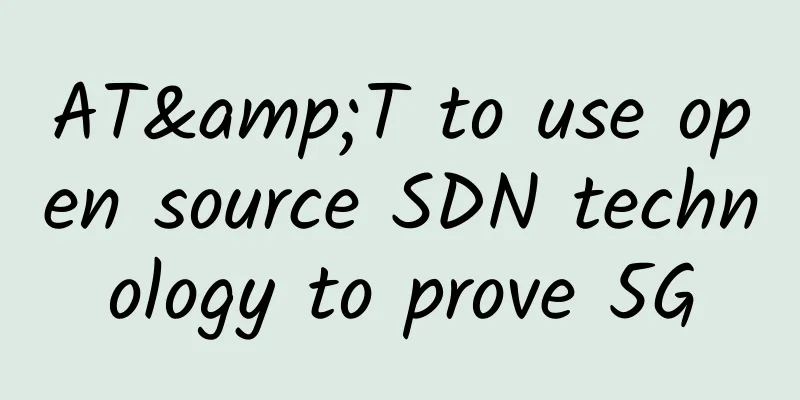AT&T to use open source SDN technology to prove 5G

|
As the next generation of mobile communication technology, the research and development of 5G technology is in full swing. However, 5G's faster speed and lower latency also bring some problems. The same Internet access lacks applications to better demonstrate its functions. For example, Chattanooga Municipal Power Company EPB reduced the price of Gig-internet to $69.95 per month because many customers chose the slower 100MB service at $59.95 because typical mobile and PC applications did not demonstrate the advantages of high speed.
It’s a bit of a chicken and egg problem. Without high-speed infrastructure, you can’t build applications that showcase 5G’s capabilities. And without applications, the infrastructure won’t be cost-effective and deployable at scale. Last week, AT&T, the Linux Foundation, IBM, Intel, Ericsson and others announced an open source partnership to advance key components of the SDN stack, including control, orchestration, management and policy, so that it can run on mass-produced commercial telecom hardware in the future. The move is best understood in the context of the open-source data center hardware consortium, the Facebook-started Open Compute Project (OCP), which includes nearly every major data center equipment maker and data center owner, including Facebook rival Google. Facebook and Google chose to contract with large hardware manufacturers such as Dell, HP and IBM to build the systems in their data centers. They wanted more flexibility and lower costs. These companies moved very quickly to develop their own hardware platforms. These platforms are based on open source software and optimize the flexibility of their data center platforms to meet changing workloads by focusing their influence at the component level and removing the dependence on system manufacturers' product cycles. Intel, for example, builds motherboards that use field-programmable gate arrays (FPGAs), enabling previously hardwired low-level code to be updated as a software project that adds functionality, increases processing speeds and reduces latency, eliminating the need for forklift upgrades. |
<<: Technical analysis: Comparison between fiber optic transmission and wireless transmission
>>: The world's first commercial Gigabit LTE network and terminal launched
Recommend
5G will bring a range of possibilities to future buildings
The fifth generation of mobile networks (5G) is e...
Five technology trends everyone must prepare for in 2024
Machine intelligence, the blurring of the lines b...
China Mobile lost 8 million users. Why are users disappointed with China Mobile?
The introduction of the number portability policy...
The three major operators were forced to delist from the US: the impact was not significant but the intention was obvious
On December 31 last year, the New York Stock Exch...
The 2020 Huawei Ecosystem Partner Elite Competition opens up a channel for ICT talent training and provides the industry with "experts"
[51CTO.com original article] The severe situation...
VPSMS: 53 yuan/month KVM-512MB/15G SSD/1TB/Los Angeles CN2 GIA
VPSMS is currently holding a two-year anniversary...
From 0G to 5G: How we got here and where we are going
Ah…the beauty of wireless convenience. Thanks to ...
ABI Research: 5G slicing will generate $20 billion in revenue
5G slicing is a key enabler of new business model...
Borei Data APM is compatible with Euler open source operating system to ensure developers' performance experience
On November 9, at the Operating System Industry S...
The ultimate secret to speeding up WiFi is here!
The previous two WeChat articles "Your offic...
What serious consequences will arise from the “winner takes all” approach among Internet giants?
1. “Winner-takes-all” and multi-sided platforms w...
Across four districts in Beijing, we tested whether the "network speed reduction" is true
Recently, a piece of news about the slowdown of d...
RackNerd: 10-40Gbps unlimited traffic servers starting at $509/month, Los Angeles/New Jersey/London/Montreal data centers
The tribe has shared information about RackNerd m...
How to play the NB-IoT game in 2019?
NB-IoT technology is a low-power wide area networ...
DesiVPS: $3/month KVM-2GB/20GB/2.5TB/Los Angeles Data Center
According to information from LEB, DesiVPS is a f...









